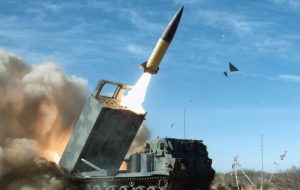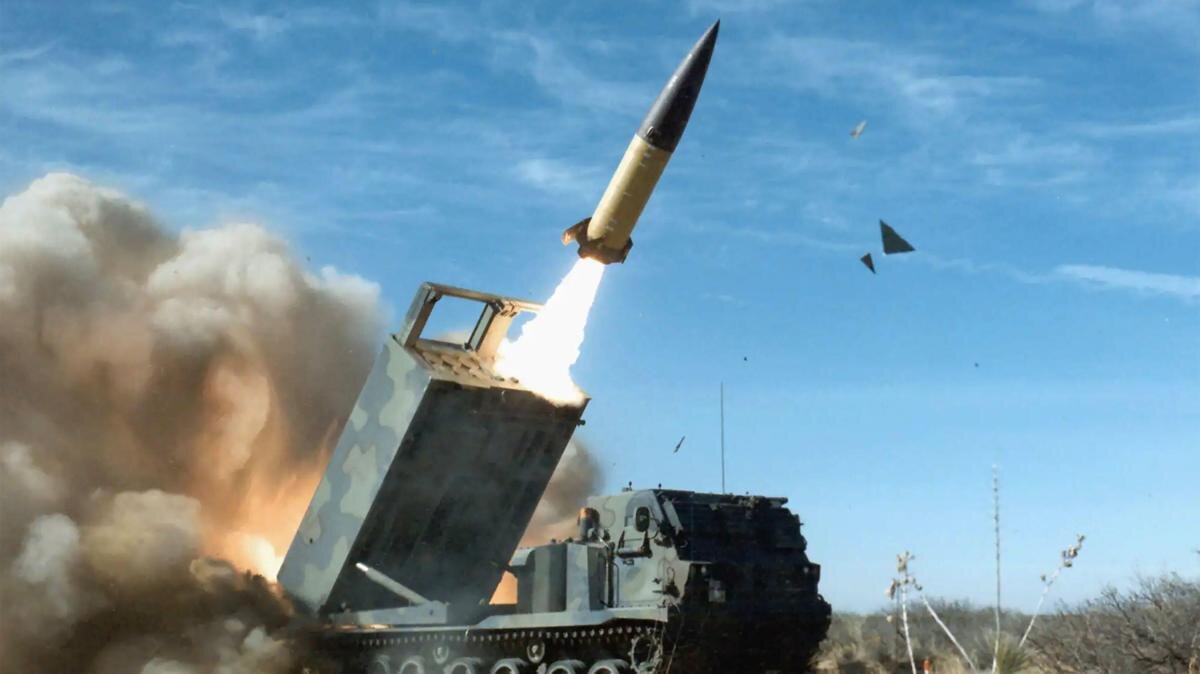Long-range strikes won’t deter Putin
Ukraine’s quest for permission to launch long-range strikes on Russian territory seemed to have been resolved in October when, after hearing Zelensky’s “Victory Plan,” the Biden administration decided not to give the green light. Now, with the dust settled on Trump’s resounding presidential victory, Biden’s reversal of this position last Sunday was an unexpected escalation. It moved reporting from


Ukraine’s quest for permission to launch long-range strikes on Russian territory seemed to have been resolved in October when, after hearing Zelensky’s “Victory Plan,” the Biden administration decided not to give the green light. Now, with the dust settled on Trump’s resounding presidential victory, Biden’s reversal of this position last Sunday was an unexpected escalation. It moved reporting from how the new administration would approach peace talks to sensational images of rockets and more war. To mark the one-thousandth day of the war, Ukraine fired Army Tactical Missile Systems (ATACMs) into the Bryansk Oblast. Russia has responded by officially promulgating its new nuclear doctrine, underlining starkly its willingness to go “all the way” if necessary. Now, it is unclear if we stand on the brink of World War III or if, once again, it is all just another flash in the pan of informational warfare.
Officials from the Biden administration and the Pentagon have not made any clear statements to justify the rationale behind the decision. Why give the permission now, two months before Trump comes into office and attempts to make a peace deal in Ukraine? Most reporting usually presents the green light as a response to Russia’s imminent use of North Korean troops to retake the Kursk Oblast. U.S. and NATO officials have declared North Korea’s involvement an escalation from the Russian side, even though the presence of North Korean soldiers on the battlefield is still contested.
If we assume this decision is not simply based on Biden’s desire to spite Trump, what could the rationale be? One reading is that it is an attempt to deter escalation—by threatening escalation. Understandably, Washington wants to stop a deterioration of Ukraine’s position prior to the opening of negotiations. But why do this when Biden is a lame-duck president without a mandate to justify his escalatory action? Furthermore, it appears the credo of “standing with Ukraine for as long as it takes” has quietly collapsed. Now, a range of analysts talk about the inevitability of making a deal with Putin. Trump’s return to the White House is expected to accelerate this process.
The real reason for the green light lies in the worsening situation on the ground in Ukraine. On the same weekend that Biden’s decision was reported, Russia launched its largest air strike in months, targeting nuclear power substations and energy infrastructure connecting Ukraine to its Western neighbors. Moscow is signaling it can shut down Ukraine’s energy grid this winter, which could not only have catastrophic humanitarian consequences but also accelerate Ukraine’s military collapse. In this context, America’s ATACMs permission slip is a feeble riposte. There is no strong reason to think the use of these missiles can have any serious impact on the course of the war. Sources informed The Times that Ukraine only has around fifty missiles at this time. After they have been fired, Ukraine will still be on the road to defeat. Russia will most likely be more infuriated, stubborn, and vindictive. The degeneration of the West’s strategy in Ukraine has reached an endgame few would have expected back in 2022. Long-range strikes are a desperate gamble to deter Russia from aggressively pursuing gains prior to the opening of negotiations in which Kyiv may well be pressured to give up 20 percent of its sovereign territory.
The timing and form of permission for deep strikes, then, cannot change the basic facts of the war, a point conceded by U.S. Defense Secretary Lloyd Austin. The decision does, however, create a dangerous juncture in which escalation could spiral into an all-out NATO-Russia war and a deadly nuclear exchange. Thankfully, several factors work against this. The first is the simple fact that Kyiv has not been given carte blanch to use these missiles in a massive coordinated major surprise attack, as it did in its August Kursk offensive. The second is that, as Russia is winning the war, in commonsense terms, they are very unlikely to use nuclear weapons, which they would save as a last resort when facing defeat.
Putin has other reasons for choosing restraint in reaction to more deep strikes. He balances the hard talk on Russia’s terms with more peaceful sentiment for partners such as India and Brazil. Any rash and disproportionate response from Russia would cause reputation damage in the Global South. There are also domestic factors at play. Although public opinion is largely supportive of the regime’s handling of the war inside Russia, Putin cannot afford to operate openly as a warmongering ogre. He must publicly show a willingness to talk or risk alienating his diverse support base, many of whom want an end to the war.
While the public theater of threat and counter-threat will continue, perhaps for the next two months until Trump takes office, the reality of the situation remains grim for Ukraine. Russia has a window where it can prosecute the war more aggressively, knowing that when Trump comes in, there will be a reset, and new rules will be worked out. If a game of chicken starts with the West over deep strikes, Putin is confident he can go right to the brink of nuclear war—and we will back down. Meanwhile, Russia will continue its assaults on Ukraine with the aim of causing a breakdown of social cohesion, economic viability, and political stability in Ukraine.
At the current stage, Moscow is waiting for Trump to come up with proposals for peace. Putin has made Russia’s terms clear: the four annexed oblasts and Crimea must be recognized as Russian; Ukraine’s neutrality must be fixed on paper with ironclad guarantees from the West. Putin has made it clear there will be no ceasefire or de facto freezing of the conflict prior to achieving a deal. Talk in Republican circles that Putin will accept a frozen conflict on the current lines or a twenty-year delay on Ukraine joining NATO looks utterly unrealistic next to what the Kremlin is saying and doing. There is no reason to think Russia can be bought off with a gift of territory in the Donbas without a deal that resolves their fundamental strategic concerns in Ukraine.
In the event of some spectacular explosions caused by ATACMs in Russia, some of Ukraine’s supporters will repeat their claim that the West can cross Russia’s redlines at will without serious consequences. In reality, if Russia shows restraint, it is most likely a reflection of the cold reasoning that they are on the path to victory and hot-headed aggressive reprisals do not help the cause. In any case, there is little reason to expect Russia’s resolve to weaken; as was the case with the ill-judged Kursk incursion, deep strikes will only make Russia more intransigent and determined. Biden’s parting gift to Ukraine may, like some of his other previous donations, turn out to be a poisoned chalice.
Matthew Blackburn is a Senior Researcher at the Norwegian Institute of International Affairs’ Research Group on Russia, Asia, and International Trade.
(Source: The National Interest)
